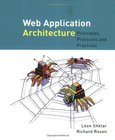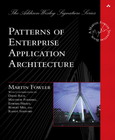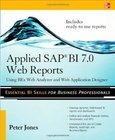Web Application Architecture
Principles, Protocols and Practices
2nd Edition

Book Details:
| Publisher: | Wiley |
| Series: | Wiley , Principles |
| Author: | Leon Shklar |
| Edition: | 2 |
| ISBN-10: | 047051860X |
| ISBN-13: | 9780470518601 |
| Pages: | 440 |
| Published: | Apr 27 2009 |
| Posted: | Nov 19 2014 |
| Language: | English |
| Book format: | |
| Book size: | 3.75 MB |
Book Description:
In-depth examination of concepts and principles of Web application developmentCompletely revised and updated, this popular book returns with coverage on a range of new technologies. Authored by a highly respected duo, this edition provides an in-depth examination of the core concepts and general principles of Web application development. Packed with examples featuring specific technologies, this book is divided into three sections: HTTP protocol as a foundation for Web applications, markup languages (HTML, XML, and CSS), and survey of emerging technologies. After a detailed introduction to the history of Web applications, coverage segues to core Internet protocols, Web browsers, Web application development, trends and directions, and more. Includes new coverage on technologies such as application primers, Ruby on Rails, SOAP, XPath, P3P, and moreExplores the fundamentals of HTTP and its evolutionLooks at HTML and its roots as well as XML languages and applicationsReviews the basic operation of Web Servers, their functionality, configuration, and securityDiscusses how to process flow in Web browsers and looks at active browser pagesAddresses the trends and various directions that the future of Web application frameworks may be headedThis book is essential reading for anyone who needs to design or debug complex systems, and it makes it easier to learn the new application programming interfaces that arise in a rapidly changing Internet environment.
Download Link:
Related Books:
Web Application Architecture
Principles, Protocols and Practices
An in-depth examination of the core concepts and general principles of Web application development.This book uses examples from specific technologies (e.g., servlet API or XSL), without promoting or endorsing particular platforms or APIs. Such knowledge is critical when designing and debugging complex systems. This conceptual understanding makes it easier to learn new APIs that arise in the rapidly changing Internet environment.* Includes discussions of markup languages: HTML, the eXtensible Markup Language (XML), XHTML, eXtensible Stylesheet Language (XSL), and Cascading Style Sheets (CSS)* Contains exercises geared to constructing an advanced XML application that makes use of XML and XSL parsers* Explores emerging technologies: Java 2 Enterprise Ed...
Patterns of Enterprise Application Architecture
The practice of enterprise application development has benefited from the emergence of many new enabling technologies. Multi-tiered object-oriented platforms, such as Java and .NET, have become commonplace. These new tools and technologies are capable of building powerful applications, but they are not easily implemented. Common failures in enterprise applications often occur because their developers do not understand the architectural lessons that experienced object developers have learned. Patterns of Enterprise Application Architecture is written in direct response to the stiff challenges that face enterprise application developers. The author, noted object-oriented designer Martin Fowler, noticed that despite changes in technology--from Small...
Applied SAP BI 7.0 Web Reports
Using BEx Web Analyzer and Web Application Designer
Deliver SAP BI 7.0 Web Reports Distribute integrated, accurate, and timely data across your enterprise using the Web-based reporting components in SAP BI. Written by an SAP insider, Applied SAP BI 7.0 Web Reports: Using BEx Web Analyzer and Web Application Designer shows you how to construct effective queries, create HTML-based reports, and combine key analytics into a dashboard-style interface. Learn how to import data from multiple providers, configure custom templates, track Key Performance Indicators (KPIs), and incorporate JavaScript and XHTML. Security, troubleshooting, and third-party tools are also discussed in this comprehensive guide. Essential BI skills for business professionals: Define queries and export them as links with BEx Web Analyz...
2007 - 2021 © eBooks-IT.org



